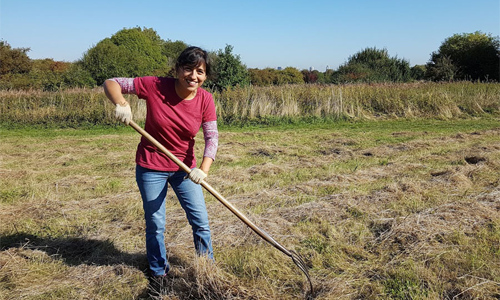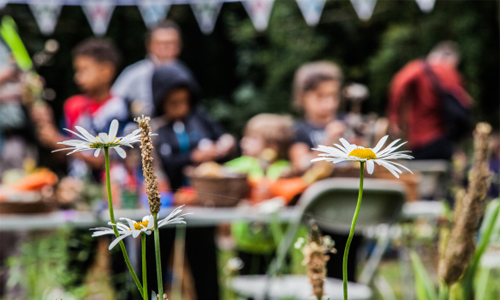 Blackthorn (Prunus spinosa) is an important native shrub for many of our local species. One of the first plants to blossom in spring, its nectar gives a great head start to many pollinators. Its berries also provide an important food source for birds in late autumn and its foliage provides nutrition for a number of butterfly species, including the scarce Brown Hairstreak (Thecla betulae). However, if left unmanaged, it can form a dense thicket, up to 5m tall, preventing any other plants from growing beneath it.
Blackthorn (Prunus spinosa) is an important native shrub for many of our local species. One of the first plants to blossom in spring, its nectar gives a great head start to many pollinators. Its berries also provide an important food source for birds in late autumn and its foliage provides nutrition for a number of butterfly species, including the scarce Brown Hairstreak (Thecla betulae). However, if left unmanaged, it can form a dense thicket, up to 5m tall, preventing any other plants from growing beneath it.
On Tuesday 3rd December, the Sutton Nature Conservation Volunteers went out to Carshalton Road Pastures in order to manage the blackthorn along the Northern edge of the site. After a quick search, we found eggs from the elusive and extremely localised Brown Hairsteak. The size of a pin head, white and the shape of a cupcake wrapper, these eggs are normally deposited on the joints of new stems of young Blackthorn in the late summer. Because of this preference for younger Blackthorn, we planned to remove existing areas of mature individuals, thus allowing younger shoots to grow in their place.
 Equipped with loppers and bow saws, the volunteers set about removing some of the Blackthorn. We removed large semicircular sections from the existing mature vegetation, a technique known as scalloping. This increases the surface area of the edge vegetation, which is the most ecologically important area, as the majority of leaves and berries grow here, and rarely occur deeper in the thicket. This also allows more light to reach the earth beneath, and so a greater diversity of wild flowers and grasses can establish themselves. In time, young Blackthorn shoots will emerge, eventually providing more suitable egg laying sites for The Brown Hairstreak. The shape of the cut area can also help create a microclimate, somewhat shielded from the wind, and so better suited for many invertebrate species.
Equipped with loppers and bow saws, the volunteers set about removing some of the Blackthorn. We removed large semicircular sections from the existing mature vegetation, a technique known as scalloping. This increases the surface area of the edge vegetation, which is the most ecologically important area, as the majority of leaves and berries grow here, and rarely occur deeper in the thicket. This also allows more light to reach the earth beneath, and so a greater diversity of wild flowers and grasses can establish themselves. In time, young Blackthorn shoots will emerge, eventually providing more suitable egg laying sites for The Brown Hairstreak. The shape of the cut area can also help create a microclimate, somewhat shielded from the wind, and so better suited for many invertebrate species.
After a long day of cutting, sawing, and dragging heaps of Blackthorn, everyone got a chance to enjoy a great controlled fire with all the material they had removed. A lovely source of warmth on a cold winters day. With Brown Hairstreak eggs found on areas scalloped on previous years, we were confident that our work here would help to sustain this important and beautiful species for years to come.
Matt Pendry
Biodiversity Project Officer






